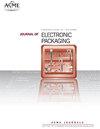Transient Nature of Flight and Its Impact on Thermal Management for All Electric Aircraft
IF 2.3
4区 工程技术
Q3 ENGINEERING, ELECTRICAL & ELECTRONIC
引用次数: 0
Abstract
High power electronics are a key component in the electrification of aircraft. Large amounts of power need to be handled onboard to generate sufficient lift for flight. The transient nature of the aircraft's mission profile produces varied loading and environmental influences, making consistent cooling and device reliability difficult to maintain. Due to limitations in weight and performance metrics, the thermal management capability becomes a key inhibiting factor in preventing adoption of all electric aircraft. Many efforts are focused on the improvement of high-powered electronics such as the inverters, batteries, and motors, but there is a need for increased focus on the implications of each improved device on the total system with regards to thermal management. To address the many concerns for thermal management within aviation, this paper will review the prevalent factors of flight and couple them to their respective challenges to highlight the overarching effort needed to successfully integrate efficient electric propulsion devices with their protective thermal management systems. A review will be combined with a brief analytical study over inverter cooling to examine the effects of various transient parameters on the device temperature of an inverter in flight. The impact of failure in the cooling systems on the shutdown process will also be examined. Both studies are tied to the motivation for examining the impacts of new and transient challenges faced by electric power systems and help signify the importance of this focus as these systems become more present and capable within the aviation industry.飞行瞬态特性及其对全电动飞机热管理的影响
大功率电子设备是飞机电气化的关键部件。需要在飞机上处理大量的动力,以产生足够的飞行升力。飞机任务剖面的瞬态特性会产生不同的载荷和环境影响,使得难以保持一致的冷却和设备可靠性。由于重量和性能指标的限制,热管理能力成为阻止采用全电动飞机的关键抑制因素。许多工作都集中在改进高功率电子设备上,如逆变器、电池和电机,但需要更多地关注每个改进的设备对整个系统在热管理方面的影响。为了解决航空热管理的许多问题,本文将回顾飞行的普遍因素,并将其与各自的挑战相结合,以强调成功集成高效电力推进装置及其保护性热管理系统所需的总体努力。综述将与逆变器冷却的简要分析研究相结合,以检查各种瞬态参数对飞行中逆变器设备温度的影响。还将检查冷却系统故障对停机过程的影响。这两项研究都与研究电力系统面临的新挑战和瞬态挑战的影响有关,并有助于表明这一重点的重要性,因为这些系统在航空业中越来越普遍和有能力。
本文章由计算机程序翻译,如有差异,请以英文原文为准。
求助全文
约1分钟内获得全文
求助全文
来源期刊

Journal of Electronic Packaging
工程技术-工程:电子与电气
CiteScore
4.90
自引率
6.20%
发文量
44
审稿时长
3 months
期刊介绍:
The Journal of Electronic Packaging publishes papers that use experimental and theoretical (analytical and computer-aided) methods, approaches, and techniques to address and solve various mechanical, materials, and reliability problems encountered in the analysis, design, manufacturing, testing, and operation of electronic and photonics components, devices, and systems.
Scope: Microsystems packaging; Systems integration; Flexible electronics; Materials with nano structures and in general small scale systems.
 求助内容:
求助内容: 应助结果提醒方式:
应助结果提醒方式:


